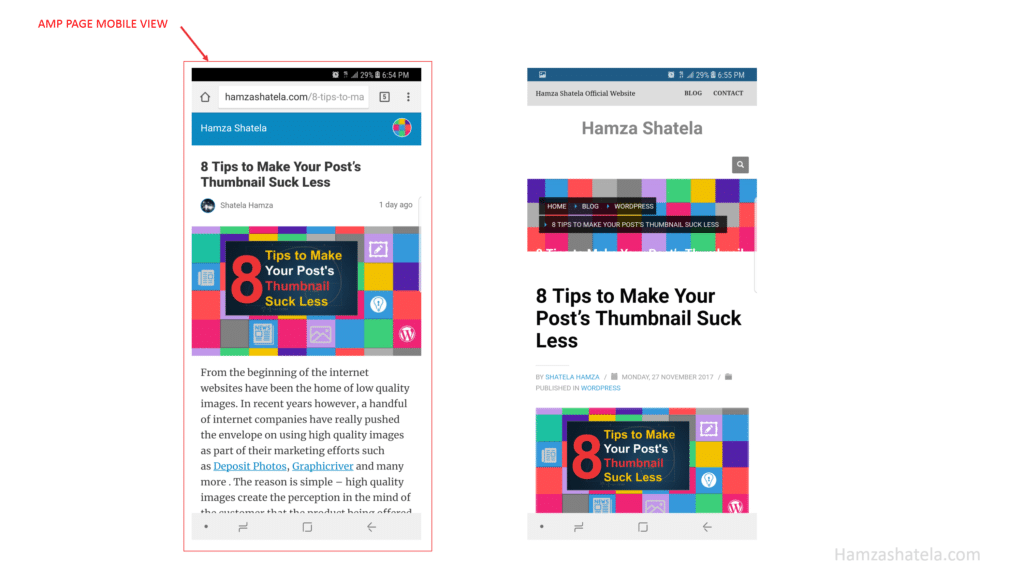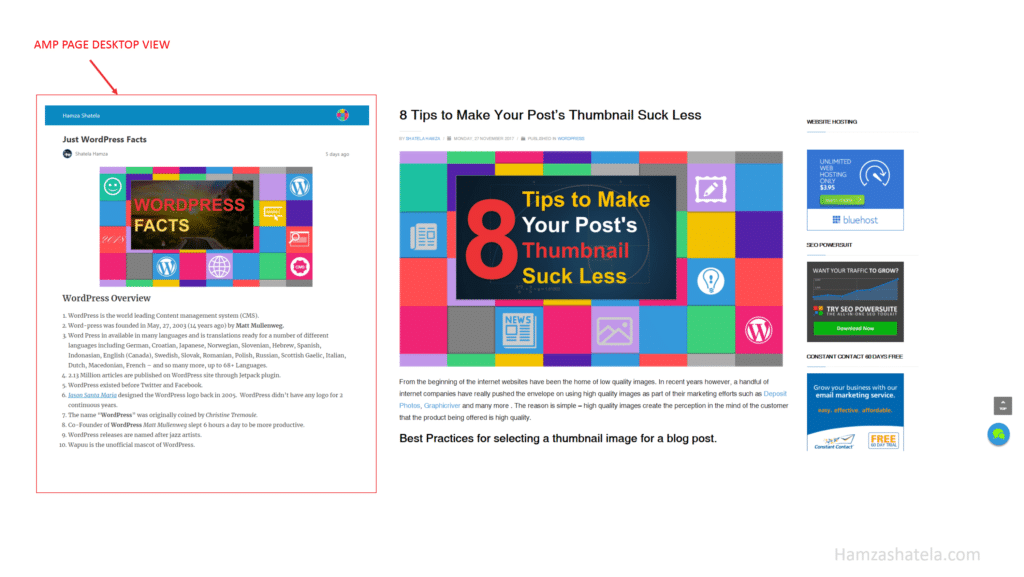
Accelerated Mobile Pages or AMP
Google AMP stands for Accelerated Mobile Pages, and as its name suggests, makes mobile pages load in an accelerated way. Since Google is a customer-oriented company, one of its primary goals is to give its users a positive user experience. This is why the search engine giant constantly updates its sophisticated algorithms, and releases programs that help users like Google AMP, Google Grantee program, and Google My Business.
In this article, we’re going to go over the Accelerated Mobile Pages program from Google, what it is, and how you can use it to impact your SEO and marketing strategy.
- What is Google AMP?
- How does Google AMP work?
- The positive impact of AMP on SEO and marketing
- How AMP impacts SEO & online marketing negatively
-
What is Google AMP?
The Google AMP Project is an open-source program that fast-tracks content to mobile devices. It’s different from the usual method of serving mobile content because its goal is to render content based on a specific form of HTML, called AMP HTML. This simplifies how the page is presented on a screen.
This is what an Accelerated Mobile Page looks like on mobile and desktop. With AMP, Mobile users navigate pages with basic text and images, but that content loads at least 10x faster as opposed to traditional HTML content.
-
How does Google AMP work?
To understand how AMP works, you need to learn the three parts to Google AMP:
- HTML
- JavaScript
- Cache
AMP HTML has a strictly defined set of pre-processing tags. Amp-ad, amp-embed, amp-img, amp-pixel, and amp-video are limited to text formatting and image embedding tags.
AMP JS is a limited Javascript file that loads all external resources in the background. Its job is preventing render blocking from interfering with screen loading time. AMP JS can also predict which DNS resources and connections it will need, and will subsequently download and size the images beforehand.
The AMP Content Delivery Network (CDN), is a system of servers which was designed to position your latest content in servers throughout the globe. This makes it easier for people who request your page and live in different countries or continents to access your content quicker thanks to a pre-rendered, optimized copy of the AMP page on a server near the country the user is from. Every time new content is updated, it refreshes the Content Delivery Network (CDN) as well.
-
The Positive Impact of AMP on SEO and Marketing
Speed is an important factor in building trust and a relationship with your clients, and you get rewarded for it by search engines. With AMP, pages are much quicker and that’s a boost for your SEO score in general. When people enjoy the experience of being on your site, you’ll be able to sell them through advertising and your bounce rate decreases.
- Accelerated Mobile Pages -increase SERPs, leading to higher search engine rankings
- You may see an improvement in your page search impressions
- Performance can be monitored through Analytics
- Improvement in Click Through Rate and decrease of Bounce Rate
-
How Does AMP impact SEO & online marketing negatively?
- There is no form submission in AMP content.
- AMP doesn’t solve the problem of page speed SEO for non-publisher sites.
- The number of paid search result item impressions might decrease.
- Your Domain Authority may suffer.
- Inline ad content display changes
- Budgeting for content development will increase.
With organizations like the Washington Post using Google AMP, it may be worth looking into if the nature of your content requires that users access it immediately. In all cases, improving page speed options never hurts, because speed is a main key to improving your rankings and SEO strategy regardless of how you do it.





